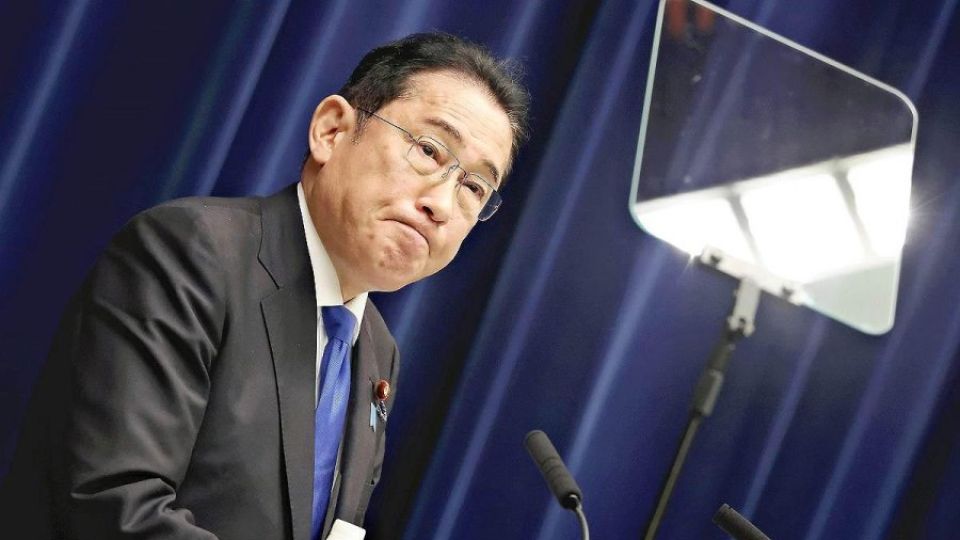August 26, 2024
TOKYO – After Prime Minister Fumio Kishida announced that he would not seek a new term as president of the ruling Liberal Democratic Party at the end of September and would step aside as prime minister, more than 10 LDP members signaled their intentions to run for the party presidency. It seems that Kishida’s imminent departure and the contest to succeed him are just the medicine the LDP needed to overcome its unpopularity.
Kishida may turn out to have rescued the LDP by announcing his intention not to run for reelection, just as U.S. President Joe Biden appears to have done for his Democratic Party.
Most LDP members were surprised when they heard on Aug. 14 that Kishida would give up his reelection bid, as they predicted he would run and possibly win because no strong candidates to replace him had emerged.
In a mid-July poll, 16% of LDP supporters picked Kishida when they were asked, “Who is a suitable candidate to be the next LDP president?” This put Kishida in second place, ahead of former Environment Minister Shinjiro Koizumi, the son of popular former Prime Minister Junichiro Koizumi. First place in the poll went to Shigeru Ishiba, a former LDP secretary general and former defense minister, who was selected by 23%. However, Ishiba has lost past LDP presidential races four times because he is unpopular among LDP Diet members.
If Kishida had remained in the race and been able to proceed to a second round of voting held among the LDP’s Diet members and the party’s 47 prefectural chapters, he was expected to secure a majority. It was assumed that he would have support from the 54-member Aso faction, the about 40-member Motegi faction, the eight members of the former Moriyama faction, and part of the about 100-member Abe faction, as well as the about 45 members of the Kishida faction.
In June, former Prime Minister Yoshihide Suga, who has schemed to become a new kingmaker, appeared on an online program of Bungeishunju magazine. He criticized Kishida’s handling of the LDP factions’ political money scandal and strongly hinted that he should resign by saying, “The prime minister has not taken responsibility, and many citizens are distrustful.” Kishida’s seeming lock on another term could be seen in the fact that no other LDP leaders followed Suga’s lead.
So, the circumstances in which Kishida found himself were slightly different from those Biden faced when many leaders of the Democratic Party, including his close friend former House Speaker Nancy Pelosi, had asked him to step aside.
Nevertheless, why did Kishida give up? The main reason was he concluded that even if he could be reelected in the LDP presidential race, the LDP wouldn’t be able to win in the next general election.
Although I don’t agree that he could have been reelected, he was smart enough to understand that strong headwinds would continue to blow against him. In recent Yomiuri Shimbun polls, the approval rating of the Kishida Cabinet remained below 30% for the ninth month in a row. In addition, more than 80% of respondents in a poll conducted in late June said they wanted Kishida to step aside at least by the end of his current tenure. It seemed almost impossible for him to reverse the negative mood. One of Kishida’s close aides revealed that Kishida said that if he stayed in his position, the opposition could take power and Japan would go down in a political storm.
Based on this realization, he apparently tried to save his political influence and legacy by yielding his position while he could do so of his own will, because if he ran and were beaten in the LDP presidential election, he would lose his reputation and political power as a former prime minister.
That’s why he emphasized in his Aug. 14 press conference that a primary purpose of his decision was to “put the LDP on a positive path as the ruling party to steadily restore public trust” and that his decision was “the most convincing first step” to demonstrate to the public that LDP is changing.
After the announcement, 11 stars of the LDP indicated their intention to run. These included two relatively young politicians, former Environment Minister Koizumi, 43, and former economic security minister Takayuki Kobayashi, 49. There are also three women, Foreign Minister Yoko Kamikawa, 71; economic security minister Sanae Takaichi, 63; and former Internal Affairs and Communications Minister Seiko Noda, 63. Also on the field are six big guns: LDP Secretary General Toshimitsu Motegi, 68; former Secretary General Ishiba, 67; Chief Cabinet Secretary Yoshimasa Hayashi, 63; former Chief Cabinet Secretary Katsunobu Kato, 68; digital minister Taro Kono, 61; and Economy, Trade and Industry Minister Ken Saito, 65. The race has attracted a high level of attention and people look forward to a new prime minister.
The new prime minister will be expected to dissolve the House of Representatives and call a snap election right after he or she takes office. Political observers forecast that the election will be held on Oct. 27, Nov. 3 or Nov. 10, but it will be up to the new prime minister. It is also forecast that the LDP will win in that election because a new prime minister usually receives a warm welcome.
In the United States, since Biden decided to withdraw from the presidential race, Vice President Kamala Harris has brought excitement to Democratic supporters and rallied the party from a bad situation against the Republican candidate, former President Donald Trump. But in the U.S. contest, it is still hard to predict who will win.
In short, Kishida did the same thing better than Biden.
Political Pulse appears every Saturday.


